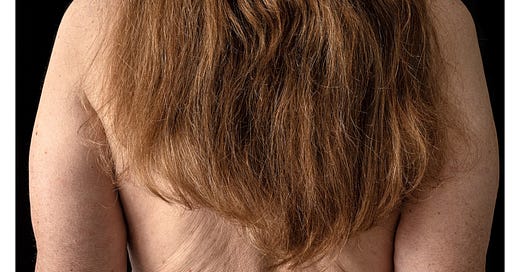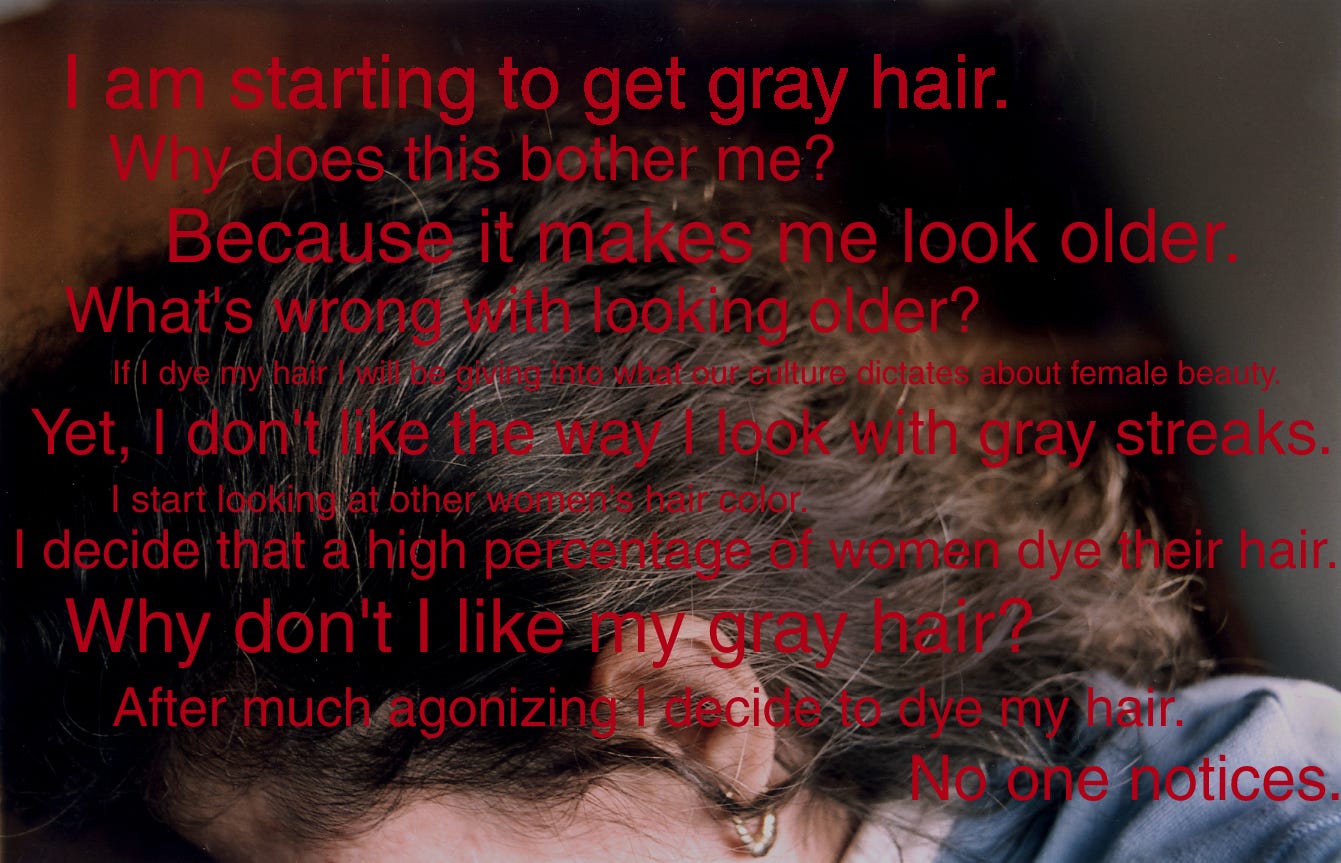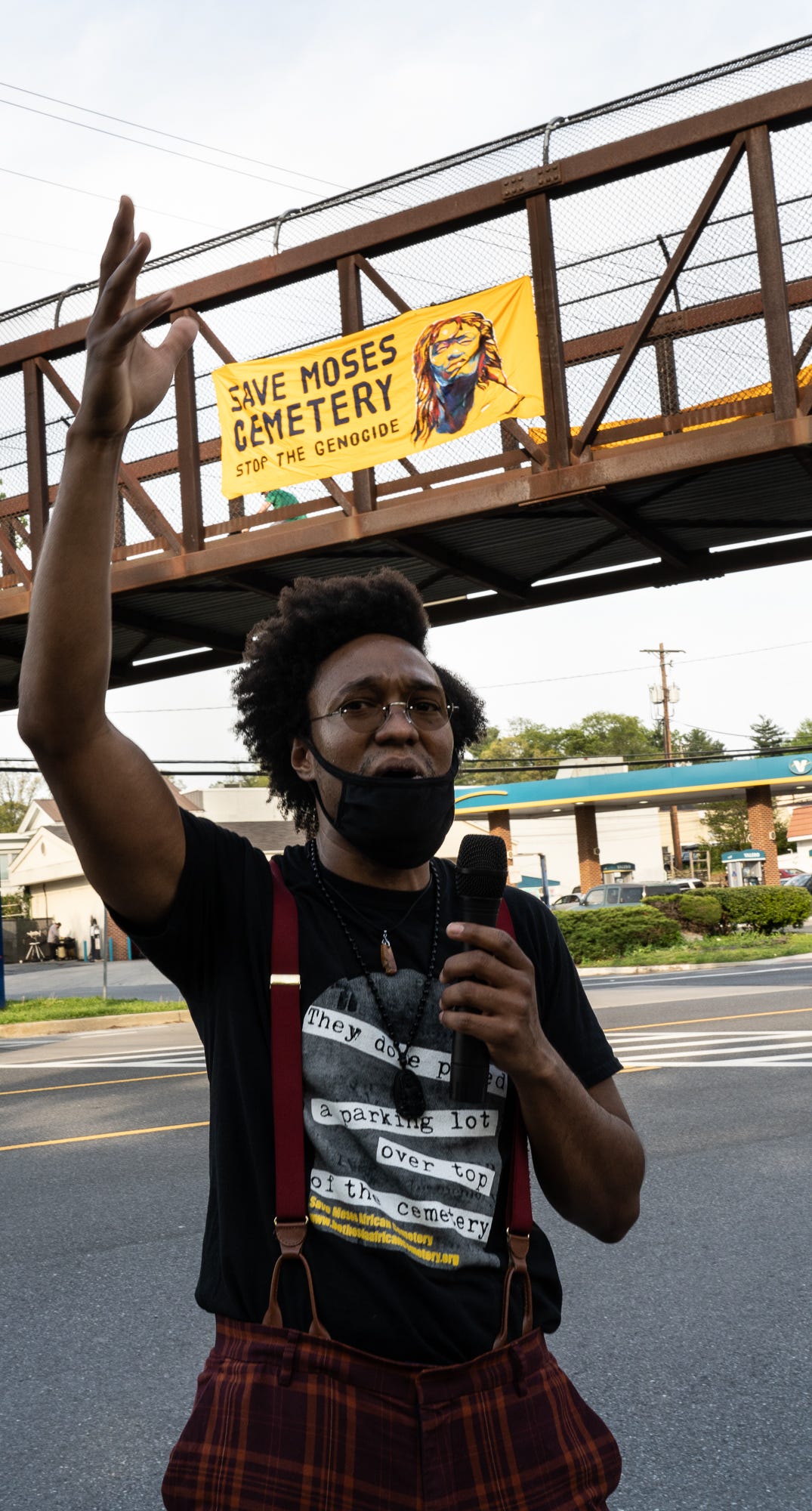Gail Rebhan, “About Time”
The California Museum of Photography exhibition in Riverside addresses the artist's life trajectory, along with her concerns about the growing inequities in the world. The show runs through August 17.
While art is often autobiographical, Gail Rebhan’s photographic work in About Time is like an open book. For more than 40 years the Washington, D.C.-based photographer has depicted some of the most personal aspects of her life. She recently completed close-up photos of her unclothed aging body in the series, Living, physically revealing a woman who regards her entire being as source material for her art.
Rebhan conceived the Living series in 2021 during the Covid-19 pandemic. Using intense light to capture the details of her flesh, she illustrates her face in semi-profile, her neck, the bottom of her thighs, knees, arms, elbows, feet and hands, all against black backgrounds. To view these large, intense pictures is to recognize a woman who listens to her own voice, shutting out media messages about maintaining youthful perfection.
“Living,” 2022, archival pigment print mounted on aluminum
Indeed, this exhibition is a bold, direct accounting of the artist’s last four decades, with forays into her childhood, often through collaged photos. About Time is about more than the perpetual passage of time on the body. Images feature many people who she has maintained bonds with, along with a range of prosaic and profound scenarios and events.
The earliest series in this exhibition, Sequential Still Life (1981) includes intimate domestic photos of Rebhan’s home life early in her marriage, recording her in-laws, husband, friends and two sons. These include shots of her husband just waking up in his PJs, of her mother-in-law serving him, of her family unglamorously dining together, along with pictures of her babies. One photo of her mother-in-law, Lill showing off her grandson at the Golden Age Senior Center (1985), resonates with pride.
This series, conveying Rebhan’s interest in small changes occurring in the domestic sphere over time, includes four images of a dish rack on sequential days, Gail’s and Mark’s Dishrack, January 13, 14, 15, 16, 1981. Two sets of three photos each of her son’s room are both titled, “Room” (2007), taken when he had come home from college. These photos, shot from above, depict a domestic disarray of laptops, computer mouses, cords, disks, pictures, a squirt gun, and trash strewn about. The image is more than just an anthropological in-joke for the parents of adolescent boys.
Her series 280 Days, 1983-84, consists of 280 self-portraits of her ever-growing pregnant self, with some images of her standing in a doorway and others looking into mirrors. These sequential shots, culminating with Rebhan showing off her about-to-give-birth belly, display what was, 40 years ago, a startling boldness about the shape of late pregnancy. It’s a case in point about how time changes our perceptions.
“Gray Hair,” 1995, archival pigment print
Rebhan also overlays many photos with text that records her personal thoughts. Over her image, Gray Hair (1995), of her long unruly hair against a black background, she writes in red, “I am starting to get gray hair. Why does it bother me? Because it makes me look older. What’s wrong with looking older? If I dye my hair I will be giving into what culture dictates about female beauty. Yet I don’t like the way I look with gray streaks. I start looking at other women’s hair color … After much agonizing I decide to dye my hair. No one notices.”
Here also are compassionate photos of her elderly father, for whom Rebhan served as care-giver. These include collage-like photos of the many accoutrements of the trade: Depends, a TV remote, various pills, a phone, chocolates, a package of Hebrew National Salami. In this series, titled Can’t, the artist also includes text about what her father can no longer do: “Shave, dress himself, take his medication unaided,” and much more.
“What Questions Do We Ask,” 2024, archival pigment print mounted on aluminum
Another series (that curator of the show, Sally Stein, Professor Emerita, Department of Art History, UC Irvine, particularly liked) is titled What questions do we ask? Several large photographs of American flags are overlaid with census questions asked, sequentially, for more than a century, revealing how much our world has changed in more than 200 years. Questions address disability, education, what language is spoken at home, housing, and race. The 1790 census on race asks, “Number of free White males under 16 years, Number of free White males over 16 years, Number of free White females, Number of other free persons, Number of slaves.”
Rebhan’s penchant for activism led her to photograph the project known as the Bethesda African Cemetery Coalition (BACC). Members of the 105-year-old Macedonia Baptist Church in Bethesda, Maryland have been protesting, along with white supporters, to have the church’s old cemetery dug up from beneath a cement parking lot and building. A January 8, 2024 Washington Post article explains, “A long-running dispute over a historic Black cemetery buried beneath a Bethesda parking lot went before the Maryland Supreme Court on Monday … The area was home in the late 19th century to Black families who had worked on Montgomery County’s farms and tobacco plantations since before the Civil War.” (This is just one of many projects nationwide focused on unearthing Black cemeteries and protecting them from development.)
“Brian Farrow wearing t-shirt designed by Gail Rebhan at Bethesda African Cemetery Coalition rally, Bethesda, Maryland, 2021, archival pigment print
The relentless Rebhan has seen her BACC photographs become widely circulated on social media and appear in Black Agenda Report, Black News Tonight, Montgomery Magazine, NBC News and WTOP news. As she extends her creative interests to the world beyond her personal life, her photos take on a visible sense of urgency, addressing her need to expose the growing inequities in the world.
About Time was originally conceived for the American University Museum, Washington, DC, where it was on view in 2023. Joanna Szupinska is coordinating curator of the exhibition for UCR ARTS. The show is accompanied by a publication of the same title.
(This article is slightly revised from the original version, published on June 14, 2025 in the Visual Art Source newsletter.)
(I met Gail Rebhan in 2020 when my sister Amy Rispin (formerly of Bethesda, MD) took me to the exhibition, Jewish Authenticity and Identity at Adas Israel Congregation, Washington, D.C. Rebhan and my sister had become friends through their involvement with the Bethesda African Cemetery Coalition (BACC). Rebhan was creating documentary photographs and artwork, and coordinating exhibitions and publications for the project. My sister was providing invaluable historical research on the Black River Road community, of which the Macedonia Baptist Church was a part. Much of her historical research was incorporated into a 2022 American University Museum exhibition, The Bridge that Carried us Over, and an accompanying publication. Unfortunately, she passed on before she could see the exhibition.)






